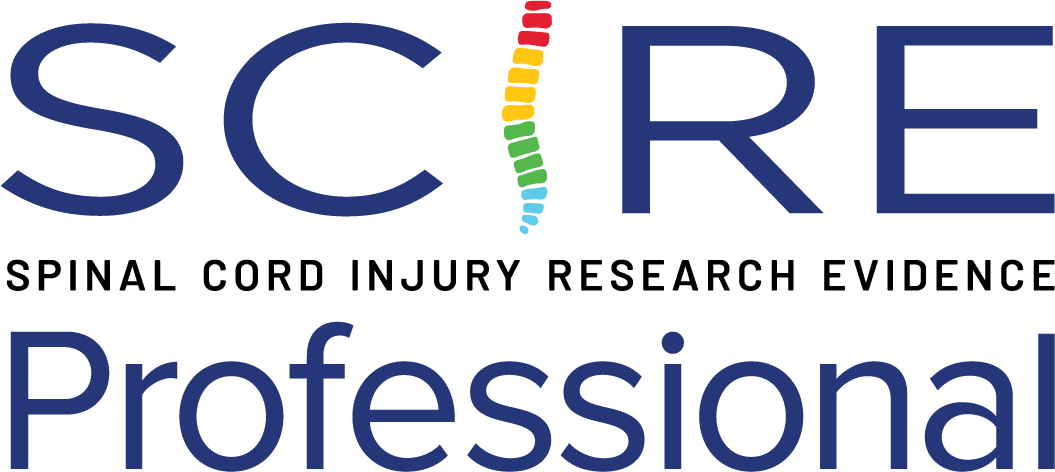- Craig Hospital Inventory of Environmental Factors (CHIEF) assesses the perceived impact of various types of environmental barriers. The CHIEF takes into account the type, frequency, and magnitude of problem resulting from these barriers.
- The CHIEF contains 5 subscales: physical and structural barriers, attitudinal and support barriers, barriers to services and assistance, policy barriers, and barriers at work and school.
- A CHIEF short-form (CHIEF-SF) is also available, with 12 items.
ICF Domain
Environmental Factors ▶ Multiple
Administration
- Self-report or interviewer
- 10-15 minutes
- There is also a short-form version with 12 items
Number of Items
CHIEF: 25 items
CHIEF-sf: 12 items
Equipment
None
Scoring
Both the CHIEF and the CHIEF-sf scores are calculated by multiplying each item’s frequency rating (0 to 4) by its magnitude rating (1 to 2) to yield each item’s “impact” score (0-8):
- Frequency: How often barriers are encountered (0=Never; 4 = Daily)
- Magnitude: indicates the size of the problem the barrier presents (1 = Little problem; 2 = Big problem)
- Item impact scores may be added together to get a subscale score or a total score.
Languages
English and Hindi
Training Required
Does not require advanced training
Availability
Information regarding the CHIEF was provided by Craig Hospital. Please contact Cindy Harrison-Felix, PhD, at charrison-felix@craighospital.org for more information.
Measurement Property Summary
Number of studies reporting psychometric properties: 3
Interpretability
- MCID: not established in SCI population
- SEM:
- CHIEF: 0.36
- CHIEF-sf: 0.24
- MDC:
- CHIEF: 0.99
- CHIEF-sf: 0.66
(Hindi version; Soni et al. 2016; n=30, 26 males; 16 paraplegia, 14 tetraplegia; ASIA A-D; mean (SD) time post-SCI: 29.87 (25.68) months)
Typical Values
Higher scores reflect the higher impact of the barrier (for that item) as well as for the subscales and total impact of barriers.
Mean (SD) Scores:
- Physical and structural: 1.51 (0.92)
- Attitude and support: 1.91 (0.95)
- Services and assistance: 0.91 (0.68)
- Policy: 1.17 (0.70)
- Work and school: 1.50 (0.90)
- Overall: 1.44 (0.82)
(Hindi version; Soni et al. 2016; n=30, 26 males; 16 paraplegia, 14 tetraplegia; ASIA A-D; mean (SD) time post-SCI: 29.87 (25.68) months)
Mean CHIEF-sf Score by AIS Grade:
| Group | n % (n = 2686) | CHIEF total |
|---|---|---|
| C1-4 ABC | 13% | 0.90 |
| C5-8 ABC | 25% | 0.78 |
| Para ABC | 41% | 0.76 |
| AIS D | 20% | 0.63 |
(Whiteneck et al. 2004b; n=2762; 78% male, 22% female; ASIA A-D)
Reliability – Moderate to High
Number of studies reporting reliability data: 2
- High test-retest reliability overall: ICC = 0.930
- Moderate to High internal consistency overall: α = 0.93
(Whiteneck et al. 2004a; n=409; mixed impairments, n=124 with SCI; no info on injury type or chronicity)
Validity
Number of studies reporting validity data: 2
NO RANKING:
- Discriminant Validity: Total score, all items and subscales produced statistically significant differences across impairment groups. People with disabilities consistently reported higher overall level of barriers on all subscales and total CHIEF score than those without disabilities. People with severe disabilities generally scored higher on subscales and the total score than all people reporting any disability
- Content Validity: 4 separate groups of subject matter experts produced 4 instruments representing common environmental factors. High consistency between groups allowed for authors to combine into one instrument.
(Whiteneck et al. 2004a; n=409; mixed impairments, n=124 with SCI; no info on injury type or chronicity)
Responsiveness
Not established in SCI population
Floor/Ceiling Effect
No values were reported for the presence of floor/ceiling effects for the SCI population.
Reviewers
Dr. Carlos L. Cano-Herrera, Tyra Chu
Date Last Updated
December 31, 2024
Soni S, Walia S, Noohu MM. Hindi translation and evaluation of psychometric properties of Craig Hospital Inventory of Environmental Factors instrument in spinal cord injury subjects. J Neurosci Rural Pract. 2016;7(1):13-22.
http://www.ncbi.nlm.nih.gov/pubmed/26933338
Whiteneck G, Meade MA, Dijkers M, Tate DG, Bushnik T, Forchheimer MB. Environmental factors and their role in participation and life satisfaction after spinal cord injury. Arch Phys Med Rehabil. 2004b;85(11):1793-803.
http://www.ncbi.nlm.nih.gov/pubmed/15520974
Whiteneck GG, Harrison-felix CL, Mellick DC, Brooks CA, Charlifue SB, Gerhart KA. Quantifying environmental factors: a measure of physical, attitudinal, service, productivity, and policy barriers. Arch Phys Med Rehabil. 2004a;85(8):1324-35.
http://www.ncbi.nlm.nih.gov/pubmed/15295760
